Engaging 20-Minute Reads for Third Graders
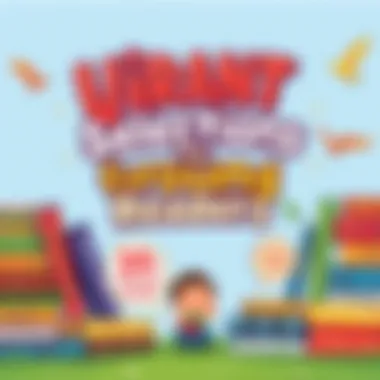
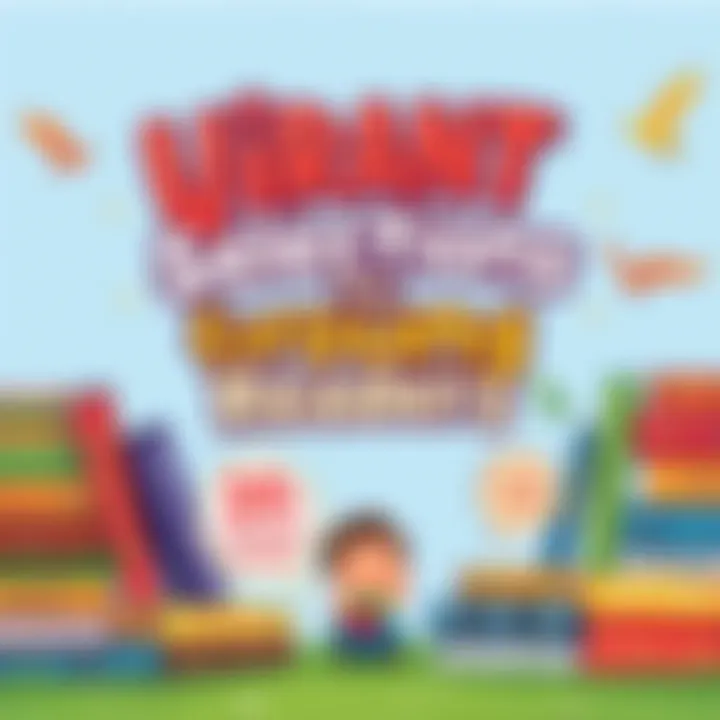
Intro
Reading is like opening a treasure chest filled with wonders. For third graders, books that can be read in about twenty minutes offer the perfect combination of engagement and brevity. These short stories not only make it easier for young readers to digest content but also encourage a deeper appreciation for literature. By selecting the right material, parents and educators can foster a love for reading, sparking curiosity while helping children improve their comprehension skills.
In this article, we'll dive into several categories of literature tailor-made for this age group. We'll explore creative activities, engaging quizzes, and fact-based articles that not only complement reading but also enhance the learning experience. So, let’s embark on this enlightening journey into the world of literature for young learners.
The Importance of Reading for Third Graders
Reading plays a pivotal role in the growth and development of third graders, a crucial age for laying the groundwork for future learning. At this age, children are not just memorizing letters and sounds; they're evolving into thoughtful readers who can comprehend and analyze pieces of literature. When they dive into stories and books, they aren’t just passively flipping through pages; they're unlocking a treasure trove of knowledge and skills that will serve as tools for their academic journeys and beyond.
This stage of childhood is marked by rapid cognitive development where critical thinking starts to flourish. Through literature, kids encounter diverse ideas, emotions, and cultures, broadening their perception of the world. Books serve as bridges, connecting them to new experiences, fostering empathy, and enhancing their view of society. Moreover, reading has a domino effect: it improves vocabulary, hones communication skills, and boosts concentration, all vital components for successful learning.
Cognitive Development Through Literature
The act of reading ignites a spark in the brain. Third graders begin to process text with greater depth, making connections between the narratives and their own lives. This cognitive engagement strengthens their neural pathways, which is essential for developing reasoning and critical thinking skills. When a child reads about a brave adventurer scaling mountains, that’s not just a story; it’s a lesson in resilience, problem-solving, and the importance of perseverance.
Research suggests that frequent exposure to literature at this stage significantly enhances cognitive abilities. Engaging with books helps to solidify memory retention and comprehension skills, making it easier for them to recall details and comprehend complex ideas as they progress through their education. When children regularly interact with stories, they're not just reading for fun; they are actively exercising their brains, setting the stage for higher academic performance in later grades.
Fostering Imagination and Creativity
Books are more than just portals to another world; they fuel the imagination. When third graders immerse themselves in fantastical tales or thrilling adventures, they learn to think outside the box. This imaginative exercise is crucial in developing their creative thinking skills. What happens when a child engages with a story of wizards and dragons? They visualize the scenery, create their own endings, and perhaps even draft their narratives inspired by those stories.
Moreover, creativity does not merely serve a purpose in arts. It spills over into problem-solving in everyday life and academics, providing children with innovative ways to approach challenges. By embracing literature that stimulates their minds, children learn that there are multiple perspectives and solutions to every dilemma.
"Reading is the gateway skill that makes all other learning possible."
– Barack Obama
To summarize, encouraging third graders to read is an investment in their future. It nurtures cognitive development while fostering creativity and imagination. As young minds grasp the value of stories, they are more likely to embrace lifelong learning, leading to successful endeavors in both their academic and personal lives.
Characteristics of Effective 20-Minute Reads
When it comes to selecting literature that captivates the attention of third graders, there are key characteristics that set effective 20-minute reads apart. These books must not only engage young minds but also enhance their learning experience within a condensed time frame. Finding that sweet spot where stories are both educational and entertaining is essential. Let's explore the elements that contribute to successful reading materials for this age group.
Engaging Storylines
In the world of children's literature, an engaging storyline is akin to a hook in fishing—it grabs attention and reels readers in. For third graders, storylines must incorporate elements of adventure, hope, mysteries, or battles that resonate with a child’s thoughts and feelings. A gripping narrative often encourages young readers to turn the page, eager for what comes next.
For instance, a story about a young chef embarking on a culinary expedition could inspire a passion for food and inspire dreams of future culinary success. Conversely, a journey to uncover ancient secrets hidden in a local park can stimulate imaginations and entertain curious minds. Books like The Magical Tree House series exemplify how a compelling plot draws children into fantastical realms, making them thirsty for knowledge.
Relatable Characters
Characters serve as the heart and soul of a story, particularly for third graders who are learning to relate to the world around them. As children read, they want to see themselves reflected in the protagonists’ journeys. When characters face challenges, exhibit growth, or express emotions that mirror those of the readers, it fosters a strong connection.
Consider a book featuring a character moving to a new school. Such a storyline resonates with children who face similar experiences, allowing them to empathize and learn from the character's journey. In stories like Ella Bella Ballerina, readers get to meet characters whose highs and lows make them feel understood and less alone in their experiences.
Age-Appropriate Themes
Themes found in literature for third graders should be relatable and comprehensible to their experiences while ensuring they still provoke thought. Topics can range from friendship and diversity to environmental issues. Books that incorporate these topics encourage dialogues between parents and children, enhancing comprehension skills and nurturing curious minds.
For instance, a book like Last Stop on Market Street discusses themes of social justice and community through the eyes of a child, making them accessible for young readers. This broadens their understanding while remaining age-appropriate.
"Books can be vehicles for discussions that shape young minds and challenge their viewpoints."
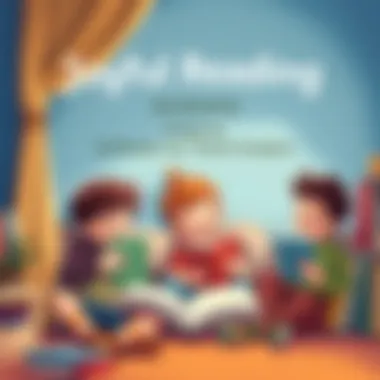
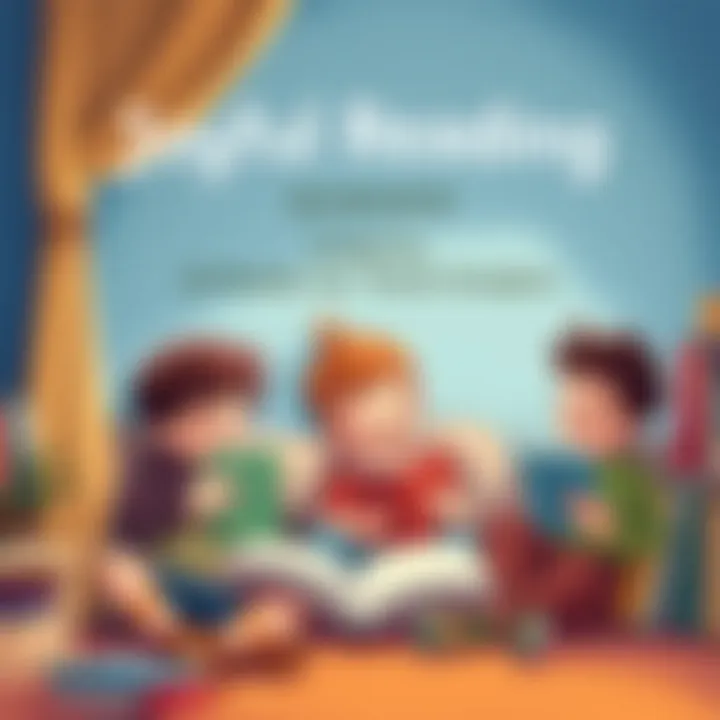
As parents and educators select literature, they should keep an eye on these characteristics to ensure the stories not only entertain but also educate and empower young readers. Integrating books with engaging storylines, relatable characters, and age-appropriate themes is essential in nurturing a lifelong love for reading.
Genres to Explore
Identifying the genres that resonate with third graders is essential in fostering a vibrant reading culture. Each genre serves its own purpose and caters to different interests and cognitive levels. Educators and parents alike can use diverse genres as tools for enhancing comprehension, encouraging empathy, and navigating the vast universe of literature. This section dives into specific genres and why they hold particular significance for young readers.
Adventure Stories
Adventure stories captivate young minds with thrilling plots and dynamic characters. These tales often take readers on journeys through uncharted territories, allowing them to experience excitement and challenge. They encourage bravery, problem-solving, and resilience, as characters often face adversity. Key elements of adventure stories include:
- Exciting Settings: Be it a jungle, a pirate ship, or outer space, settings that pulsate with possibility draw readers in.
- Challenges to Overcome: Characters usually encounter obstacles that require clever solutions or teamwork, teaching valuable life lessons.
- Unique Lessons: Adventure stories provide a platform for discussing cooperation, confidence, and overcoming fears. Young readers connect with characters who reflect their own struggles and aspirations.
Fantasy Literature
Fantasy literature unlocks doors to worlds beyond imagination. It transports readers to realms where anything is possible. Elements that make fantasy appealing include:
- Magical Elements: Wands, dragons, and enchanted items fill these stories, stimulating creativity and wonder.
- Complex Characters: Fantasy often features characters who are relatable yet extraordinary, allowing children to identify with heroes and villains alike.
- Moral Lessons: These stories often tackle themes of friendship, bravery, and the fight against evil. This genre invites readers to reflect on their values in a fantastical context.
Informative Non-Fiction
Informative non-fiction books play a critical role in a child’s education. They satisfy curiosity and provide factual knowledge presented in engaging formats. Essential aspects of non-fiction include:
- Real-Life Applications: Topics can rangefrom animals and history to space travel, helping children connect what they read with the world around them.
- Visual Aids: Charts, photographs, and diagrams enhance comprehension, making complex ideas accessible.
- Encouraging Inquiry: Non-fiction promotes critical thinking skills, encouraging readers to ask questions and seek out further information. This genre can ignite a passion for science, history, or the natural world.
Mysteries and Puzzles
Mysteries and puzzles engage young readers in problem-solving, drawing them into a world of inquiry. These stories often involve a key question that must be answered, captivating readers’ attention. Characteristics of this genre are:
- Intriguing Plots: Readers love to piece together clues and solve riddles alongside the protagonist, fostering a sense of participation.
- Critical Thinking: Mysteries challenge children to think logically and analyze information, honing their reasoning skills.
- Teamwork and Collaboration: Many mysteries involve team efforts to solve problems, instilling values of cooperation and friendship as readers see groups working to uncover the truth.
Engaging children in various genres encourages deeper thinking and enhances their overall literacy skills, giving them tools they can carry into their futures.
In summary, introducing a variety of genres to third graders is not just about entertainment. It's about nurturing curiosity, empathy, and cognitive skillsets that lay the groundwork for lifelong learning and a genuine love for reading.
Top Recommendations for 20-Minute Books
When it comes to developing a passion for reading in third graders, selecting the right books is vital. The Top Recommendations for 20-Minute Books aim to provide a curated list of titles that not only capture attention but also enrich young minds. These selections are specifically important as they cater to a variety of interests and learning levels. By highlighting engaging literature that can be consumed in short intervals, parents and educators will find that these books are valuable tools for fostering a love for reading without overwhelming children.
Classic Tales Revisited
Classic tales often serve as the foundation of children's literature, bridging generations through storytelling. These stories have stood the test of time, often carrying moral lessons and timeless themes that resonate. Titles such as The Velveteen Rabbit by Margery Williams and Charlotte's Web by E.B. White elicit a sense of nostalgia while still remaining relatable to today's young readers.
Why are these tales important? Well, they introduce children to literary heritage while igniting their imagination. Classic characters and well-known plots allow kids to engage in discussions about stories that their parents likely loved as children. Furthermore, the language patterns found in these narratives can help build vocabulary and comprehension skills in an enjoyable way.
Contemporary Favorites
In the realm of today’s literature, contemporary favorites capture the essence of childhood today. Books like Dog Man by Dav Pilkey and The Pigeon Finds a Hot Dog! by Mo Willems have found their way into the hearts of young readers. These books not only offer humor and whimsy but also reflect modern-day themes, making them far more relatable. Children see their own lives and experiences reflected back at them, fostering a deeper interest in reading.
Contemporary literature often encourages exploration of new ideas and cultural awareness. This aspect can lead to important discussions between parents and children regarding topics of empathy, diversity, and friendship. Getting kids excited about their reading journey through these relatable stories can create a foundation for engaging in literature long term.
Award-Winning Literature


Books that have been recognized for excellence in storytelling and educational value hold a special place in literature circles. Award-winning titles such as Last Stop on Market Street by Matt de la Peña and The Pigeon Wants a Puppy! by Mo Willems often come with accolades, such as the Newbery Medal or the Caldecott Honor.
These stories have proven to touch hearts and minds, providing not just entertainment but also social and emotional development. They can challenge readers to think critically, empathize with others, and reflect on their society. Why should you consider introducing these to children? Because exposure to quality literature can refine their critical thinking and inspire them to write their own stories in due time. Through award-winning literature, young readers embark on journeys that mold their perspectives and deepen their understanding of the world.
"Reading is not just about understanding words; it's about understanding the world around us."
Practical Tips for Parents and Educators
When it comes to nurturing a child's love for reading, parents and educators play a crucial role. Understanding the strategies to effectively integrate reading into daily life can make a significant difference. This section will cover three key areas that can greatly enhance the reading experience for third graders, ensuring that it becomes a cherished part of their routine.
Integrating Reading into Daily Routines
Creating a habit of reading within a child’s daily routine is fundamental. Just like brushing teeth or eating breakfast, reading can become a seamless part of everyday life. Here are a few ideas:
- Set a specific time for reading each day. It could be after school or right before bedtime.
- Start with just 20 minutes. This manageable timeframe is appealing and keeps the child engaged without feeling overwhelmed.
- Incorporate reading into activities. For example, while waiting for dinner to cook, a child can dive into a book.
Doing these simple things can help to build a consistent reading habit. Furthermore, parents can read along. This not only encourages children but also allows them to see reading as a shared and enjoyable activity.
Creating a Comfortable Reading Environment
A kid's reading space can make all the difference in whether they feel drawn to books or not. Here are some pointers to spruce up their reading nook:
- Provide cozy seating: A soft cushion or bean bag can make the reading spot inviting.
- Ensure good lighting: A well-lit area is essential for comfortable reading. Natural light or a child-friendly lamp can do wonders.
- Include their personal touches: Let them decorate their space. This could be with book posters or even a mini-library shelf filled with their favorite titles.
These elements contribute to a more welcoming atmosphere, encouraging them to pick up a book and lose themselves in stories.
Encouraging Discussions About Books
Discussing what a child reads can deepen their comprehension and spark interest in further reading. Here’s how to incorporate discussion into reading:
- Ask open-ended questions: This could be as simple as "What did you think about the main character's choice?" or "How would you feel in a situation like that?".
- Create a 'book of the week' club: Each week, focus on a different book and discuss it openly, encouraging all family members to share their perspectives.
- Relate stories to real life: Show them how lessons from the book can be applied to everyday situations. This connection adds value to the reading experience.
By engaging in meaningful discussions, parents and educators not only assess comprehension but also foster critical thinking and curiosity.
Evaluating Reading Comprehension
Reading comprehension stands as a cornerstone of literacy development and learning, particularly for third graders who often transition from learning to read, to reading to learn. As they explore engaging literature, the ability to grasp and understand text becomes vital. Evaluating reading comprehension helps both educators and parents determine if the child not only can read the words on the page but can also derive meaning and draw connections from the story. This process cultivates critical thinking, a skill that extends well beyond the classroom.
One key consideration is that evaluating comprehension isn't simply about answering questions correctly; it involves a deeper insight into a child’s understanding of characters, plots, and themes. Asking the right questions can lead to discussions that reveal how a child interprets and connects with material. Integration of these evaluations into regular reading practices fosters an environment of curiosity and learning, enhancing both engagement and comprehension.
Assessing Understanding Through Questions
To effectively assess a child's understanding, one must tailor questions that probe beyond surface-level responses. Open-ended questions, as opposed to yes or no queries, encourage children to express their thoughts freely, allowing for more in-depth comprehension checks. For instance, after reading a chapter, asking a child, "What do you think the main character was feeling in this situation?" opens the floor for exploration of emotions, motivations, and even personal connections.
Moreover, it's beneficial to incorporate various types of questions:
- Literal Questions: Focus on recalling specific facts from the text. For example, "What happened when the character entered the cave?"
- Inferential Questions: Encourage children to read between the lines. "Why do you think the character chose to help the stranger?"
- Evaluative Questions: Promote critical thinking. "Do you agree with the character’s decision? Why or why not?"
By fostering dialogues that incorporate these question types, parents and educators invite a richer literary experience for the child.
Utilizing Visual Aids and Summaries
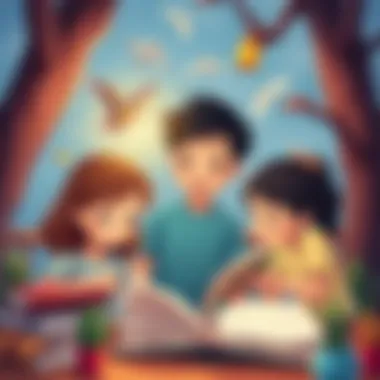
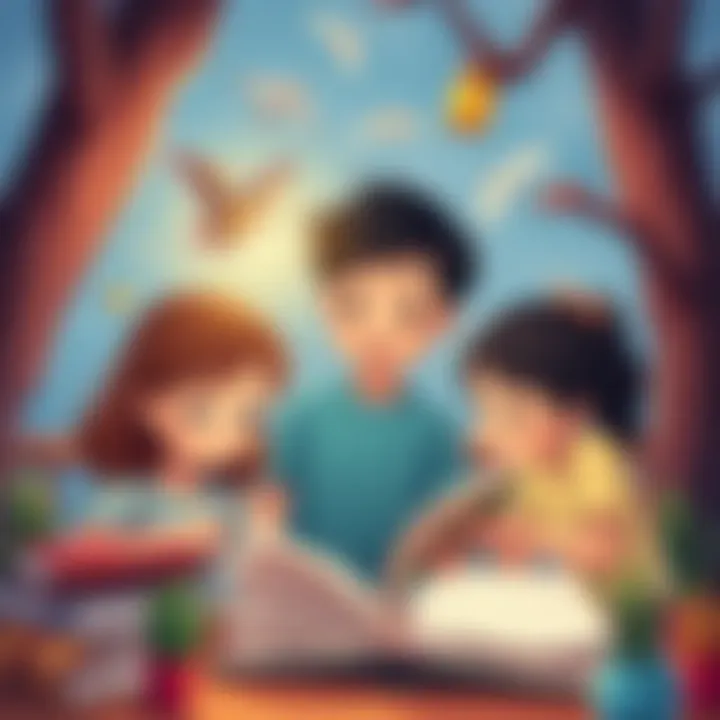
Visual aids hold significant power in enhancing comprehension for third graders. Tools such as story maps, diagrams, and illustrations serve to reinforce key concepts and structure. For instance, a graphic organizer can help break down a story’s setting, characters, and plot, inviting children to visualize and organize their thoughts effectively.
Additionally, summarization plays a critical role in comprehension evaluation. Summaries not only require the child to recall major events but also compel them to distill information into concise points. One effective method is the "5 W's and H" framework—Who, What, Where, When, Why, and How. By encouraging children to summarize a story using these prompts, they will hone their analytical skills while also gaining confidence in their understanding.
Incorporating these visual aids and summary techniques can create a robust framework for assessing reading comprehension. Children will not only feel more connected to the text but will also enhance their communication skills through discussions about their summarized insights.
In sum, evaluating reading comprehension equips both parents and educators with insights into a child's literary journey. The engagement through targeted questioning and effective use of visual aids can transform the reading experience, molding a deeper understanding and paving the way for lifelong learning.
The Role of Schools in Promoting Reading
Schools play a pivotal role in laying a solid foundation for literacy. A nurturing environment makes a world of difference in how children engage with literature. The importance of promoting reading in schools cannot be overstated; it directly influences academic performance and a child’s lifelong relationship with books.
It's vital that the schools don't just hand over materials but actively cultivate an atmosphere that fosters a passion for reading. When schools invest in creating a reading-rich environment, children are more likely to develop a habit of reading that extends beyond the classroom.
Building a Robust Library Collection
A well-stocked library serves as the backbone of a reading culture. Schools should focus on curating a collection that speaks to diverse interests and reading levels. When students can see themselves in the books, they are more likely to be drawn to read further.
- Diversity: It’s essential to include books that represent various cultures, communities, and experiences.
- Genres: A mix of genres including fantasy, historical fiction, and informative literature encourages exploration.
- Availability: Regularly updated collections keep material fresh and relevant, spurring curiosity.
In addition, providing access to digital books can greatly enhance reading options. Kids today are tech-savvy; integrating eBooks into the library can meet them where they are.
Encouraging Book Fairs and Reading Programs
Book fairs and reading programs are stellar methods for generating excitement around reading. Not only do these initiatives promote sales of books, but they create a buzz that can make reading feel like a fun and communal activity. Schools should consider:
- Interactive Events: Organize themed events where students dress as their favorite characters or participate in reading challenges.
- Author Visits: When children meet authors, it opens up a world of storytelling and inspiration. The face behind the words can make reading feel more tangible.
- Reading Incentives: Programs rewarding students with prizes for completed reading missions can greatly increase participation.
"Kids who read consistently show higher concentration levels and perform better in various subjects."
By incorporating systematic approaches that include both traditional and innovative ideas, schools ensure that reading becomes not just a task but a favorite pastime for young learners. All these strategies tie together to ultimately nurture what should be a lifelong love for literature.
End: Nurturing a Lifelong Love for Reading
Fostering a passion for reading in young minds is more than just teaching children how to decode words on a page; it's about igniting a love for stories that can last a lifetime. This article highlights how 20-minute reads serve as a gateway to enhance comprehension, stimulate curiosity, and enable discussions among peers and family members. These short books are perfectly suited for third graders, who are at a crucial age for developing their literacy skills and discovering their own interests in literature.
A key benefit of encouraging a reading habit is the impact it has on cognitive development. The importance of practical engagement cannot be overstated. As children delve into different genres and diverse characters, they not only improve their vocabulary but also develop empathy and critical thinking skills. It's like giving them the keys to understanding the world around them through the eyes of others, expanding their horizons.
Moreover, integrating reading into daily routines strengthens bonds between parents or caregivers and children. When nights wind down with a story, it’s more than just entertainment; it becomes a shared experience, a moment to connect over adventures or lessons learned through narrative. This time spent together can encourage children to seek out reading as a pleasurable activity, enhancing their relationship with books.
Engagement Beyond the Pages
The journey of engaging with literature does not have to end when the book is closed. In fact, the discussions following a reading can be just as enlightening as the text itself.
- Talking about the story can help solidify what children have absorbed. Consider discussing questions such as:
- What was their favorite part and why?
- How did the characters change throughout the story?
- What would they have done differently if they were in the story?
These conversations can guide children to think critically about what they read, encouraging them to make personal connections with the material. It also builds their confidence to express their thoughts and feelings regarding different subjects, fostering a more comprehensive literary analysis as they advance to higher reading levels.
Furthermore, incorporating creative activities related to the books read—like drawing scenes, writing alternate endings, or even engaging in role-play—can deepen understanding and make the reading experience more memorable. Such activities blend learning with fun, enhancing retention and ensuring the stories resonate with children far beyond the pages.
Caring for a child’s reading journey means nurturing a rich tapestry of experiences built around stories. By focusing not only on the act of reading but also on the interaction that follows, children are encouraged to form a lasting relationship with literature, ultimately leading to a lifelong love for reading.
"Reading is a way for children to become acquainted with life outside their own experience, helping them grow into well-rounded individuals."
In essence, 20-minute books are not just a practical tool for education; they are the stepping stones toward opening up a world of understanding and imagination. As parents and educators, the goal must be to create an enduring environment where reading is cherished, leading to a future where children not only read for learning but also for joy.







